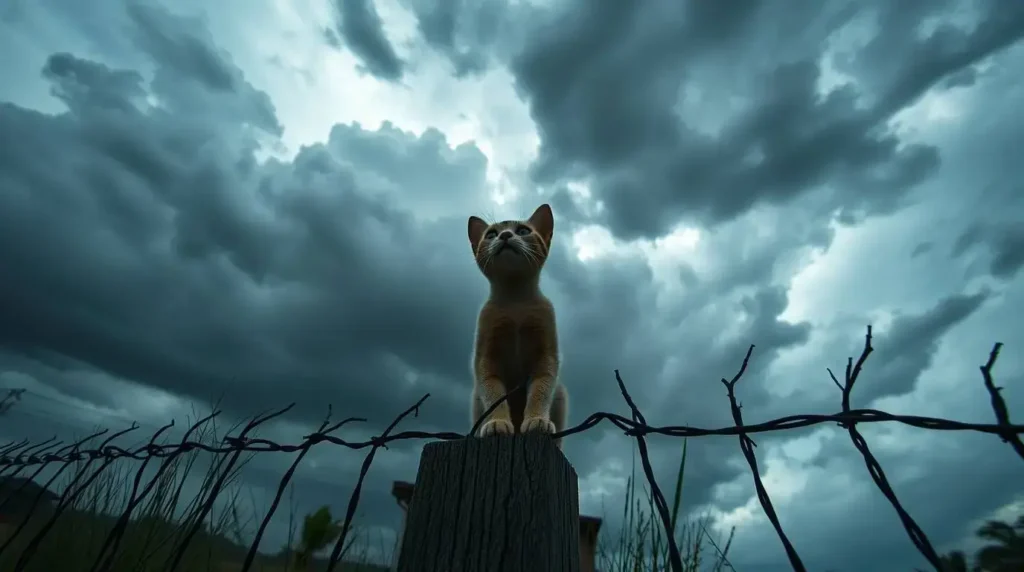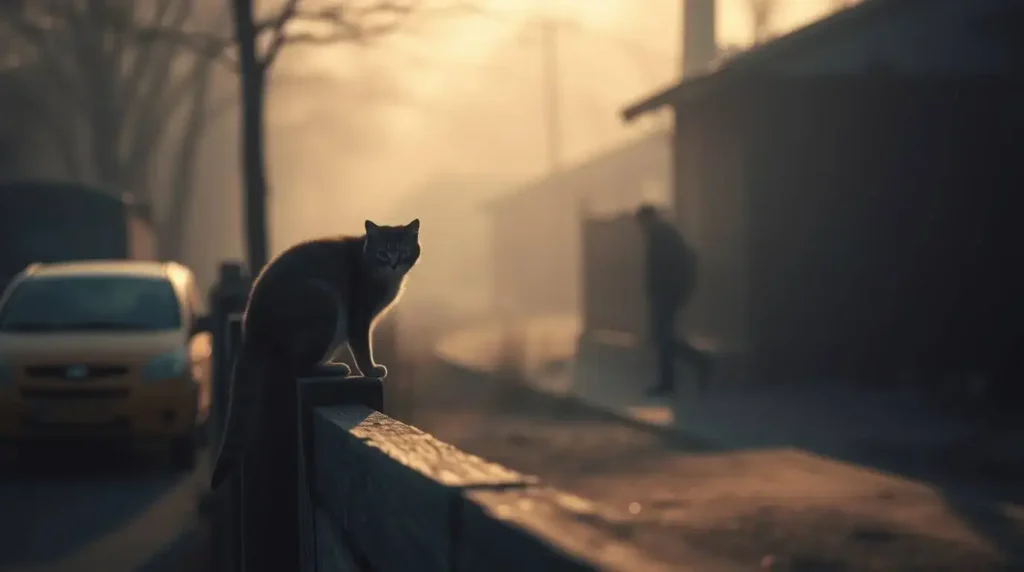Stray cats move through our neighborhoods like shadows—here one moment, gone the next. If you’ve ever paused and wondered, “Where do stray cats go during the day?”, you’re not alone. This question sparked a deep-dive investigation by WhizPet, where our team of animal behavior researchers, vets, and urban ecology experts teamed up to uncover the truth. We surveyed communities, analyzed case studies, and pored over the latest scientific reports to decode the elusive daytime behavior of stray cats in the U.S.
Through this blog, you’ll gain rare insight into where do stray cats go during the day, how they survive, where they hide, and why their behavior changes with the environment. From alleyways in New York to suburban backyards in California, our research paints a vivid picture of their hidden daytime routines.
So if you’ve found yourself asking, “Where do stray cats go during the day?”, you’re about to get answers—backed by real data and expert voices. Let’s unravel the mystery together.

Where Do Stray Cats Go During the Day? A Hidden World Explained
Stray cats are stealthy survivors. Understanding where do stray cats go during the day gives us insight into how they cope, adapt, and thrive despite harsh urban and rural challenges.
Secret 1: Urban Hideouts and Shelter Spots
One of the most common answers to where do stray cats go during the day is that they seek quiet, hidden spots in urban environments. According to the ASPCA, stray cats often nest in:
- Abandoned buildings
- Garages or sheds
- Under porches or decks
- Behind dumpsters or dense shrubbery
These spots offer warmth, safety from predators, and relative quiet. Animal behaviorist Dr. Kate Hurley from UC Davis explains, “Stray cats are survival experts; they learn to identify and adapt to low-risk zones in the urban ecosystem.”
Additionally, stray cats take advantage of microhabitats—like empty shipping containers or cracks in foundations—where they can remain undetected while staying safe from dogs, people, and cars. These hideouts are especially valuable during the heat of the day or when human activity peaks.
Secret 2: Temporary Human Bonds
You may be surprised to learn that many stray cats form temporary, low-contact relationships with humans. A 2023 study by Petfinder Foundation noted that about 41% of stray cats in urban U.S. neighborhoods receive some kind of food or water from people.
So when asking what do stray cats do during the day, remember they might be making rounds to:
- Known feeding spots
- Friendly porches or backyards
- Businesses or restaurants that leave scraps
These interactions aren’t always about affection. They’re about routine and survival. In some neighborhoods, entire informal networks of residents coordinate to feed local strays at designated times.
Secret 3: Daytime Sleeping and Conserving Energy
Like their wild cousins, stray cats are crepuscular, meaning they are most active during dawn and dusk. During the day, they rest and conserve energy, usually sleeping in safe spots they’ve claimed over time.
Common resting places include:
- Roofs with sun exposure
- Parked cars (especially under the hood)
- Tree hollows or bushy areas
Research by the American Veterinary Medical Association shows that cats sleep 12 to 16 hours a day on average, and in high-stress outdoor environments, this number can be even higher due to exhaustion and energy conservation.
This also helps explain why many people wonder, do feral cats come out during the day?—the answer is yes, but usually just to find shelter and rest. They save their real activity for the quieter hours.
Secret 4: Traveling Through Hidden Networks
Stray cats often develop territorial maps that span several blocks. They travel through fence lines, drainage systems, rooftops, and alleyways, staying out of public view. These travel paths can vary depending on weather, safety, and availability of food.
- In California, animal rescue groups have documented cats using abandoned subway tunnels and storm drains.
- In colder states, such as Michigan or New York, strays seek out heat vents and underground parking garages.
Some stray cats even learn the schedules of garbage trucks and street cleaners to avoid being caught or startled.
This behavior contributes to the mystery of where do stray cats go during the day near me—they might be much closer than you think, just hidden by their clever paths.
Secret 5: Survival Mode in Extreme Weather
So where do stray cats go during the day when the weather gets rough—like during rain, heatwaves, or storms?
- Rainy days: They’ll shelter under awnings, inside junk piles, or burrow into the insulation of vacant homes.
- Winter: They cluster together for warmth, often in industrial vents, engine bays, or homemade shelters placed by animal welfare groups.
- Natural disasters: According to FEMA, many cats instinctively seek higher ground or hidden crawl spaces before storms hit.
UV exposure and dehydration are also key daytime threats. Cats naturally avoid open, sunny areas during peak heat hours and are more likely to find water runoff, puddles, or even dripping air conditioning units to hydrate.
This adaptation shows just how resilient stray cats are—and why they seem to vanish when the skies turn grey.
Real-Life Case Study: The Stray Cat of Brooklyn Heights
In 2022, a neighborhood group in Brooklyn Heights, NY, installed cameras to track the local stray population. They discovered one clever cat that disappeared daily at 9 AM and returned at dusk. Footage showed the feline slipping into a broken vent that led to a warm basement of an old bakery.
Over several weeks, residents noticed the same pattern—clear evidence of how stray cats create predictable routines for survival. This cat had found shelter, warmth, and likely food during the busiest hours of the day. Observing this behavior firsthand helped the community better understand where do stray cats go during the day and how resourceful they can be in urban environments.
This case highlights the importance of local awareness. If more neighborhoods monitored stray behavior, we could answer the question “Where do stray cats go during the day?” with greater accuracy—and use that knowledge to improve welfare programs and public cooperation.

Why It Matters: Public Health, Safety & Cat Welfare
Understanding where do stray cats go during the day is more than just solving a mystery—it has real-world implications. Stray cats often gather in overlooked places, which can become hotspots for disease transmission or territorial disputes if left unmanaged. Knowing where do stray cats go during the day helps communities:
- Enhance public safety by identifying areas with high stray activity for better resource allocation and response.
- Promote animal welfare through targeted Trap-Neuter-Return (TNR) programs that reduce overpopulation and suffering.
- Support smart policy-making, as cities with data-driven feral cat strategies experience fewer outbreaks, complaints, and ecological issues.
Local organizations like Alley Cat Allies and The Humane Society provide educational toolkits and community action plans that empower neighborhoods to coexist with strays in a humane, sustainable way. Recognizing the role stray cats play in the urban ecosystem helps create informed solutions—benefiting both people and animals alike.
FAQs
1. Do stray cats come out at night?
Yes, most stray cats are active at dawn and dusk, but many also roam at night due to quieter, safer conditions.
2. Where do stray cats go during the winter?
They often seek insulated or enclosed spaces like garages, crawl spaces, or makeshift shelters provided by animal welfare volunteers.
3. What do feral cats do during the day?
Feral cats usually rest, stay hidden, and conserve energy during daylight hours. They become more active during early morning or late evening.
4. Where do stray cats go when it rains?
They hide under cars, in thick bushes, under porches, or anywhere that provides cover and dryness.
5. Signs a feral cat trusts you?
If a feral cat starts approaching you, blinks slowly, or allows you to feed it up close, it may be starting to trust you.
Conclusion: So, Can You Solve It?
Now you know the 5 secrets behind the mystery: Where do stray cats go during the day? They hide, they rest, they form subtle bonds, and they navigate our cities like skilled explorers. Stray cats are resilient, intelligent, and deserving of understanding.
Whether you’re a cat lover or a concerned neighbor, learning their patterns helps create a safer environment for both animals and communities. And the next time you wonder, “Where do stray cats go during the day?”, you’ll know just how full their secret world really is.
Related blog: For more detailed information about pet care


Pingback: Why Is My Cat Breathing Heavily? 5 Common Causes to Know